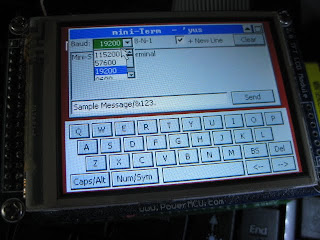Mini-STM32 Digital Picture Frame
The original source code for this project is copied from Martin Thomas' Simple STM32 Digital Picture Frame


Some of the minor modifications I made were:
demo video:
Modified Source Code (Keil RVMDK + uVision 4): Digital Picture Frame.rar

The application reads picture-files in standard Windows BMP-format from a SD-Card and shows them on a 2.8" color-LCD-module (320*240 px).The application also uses the FAT File System Module by Chan, on which M. Thomas ported to work on STM32 SPI interface. Additional information about this project can be found on the link above.


Some of the minor modifications I made were:
- I've modified the LCD driver so that it will work on my unit. My unit got the ILI9320 LCD controller.
- I didn't utilize the USART interface (but this can be easily enabled in the code). In stead of sending the "information" through this interface , some of them are being displayed on the LCD itself (e.g. bitmap filenames).
- I've enabled the two push-buttons on the board. The first one toggles between "Play" and "Pause"; and the other one is to "Restart" the "slide-show" from the beginning.
demo video:
Modified Source Code (Keil RVMDK + uVision 4): Digital Picture Frame.rar








